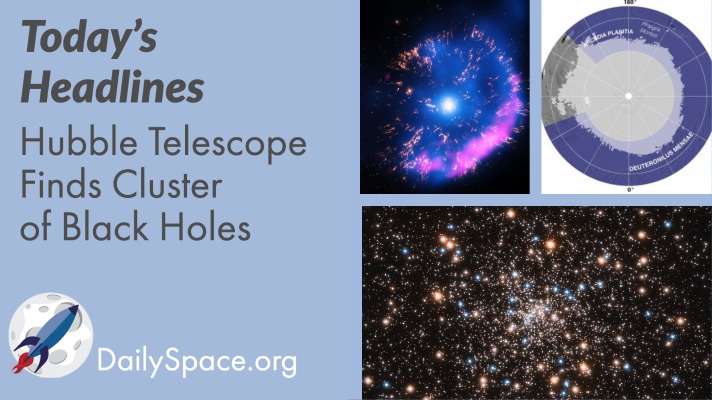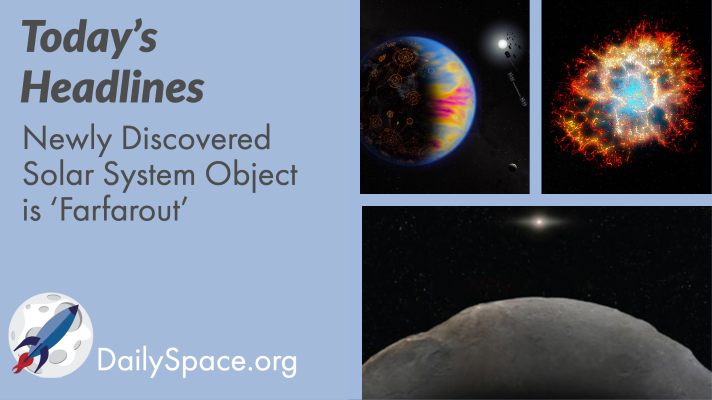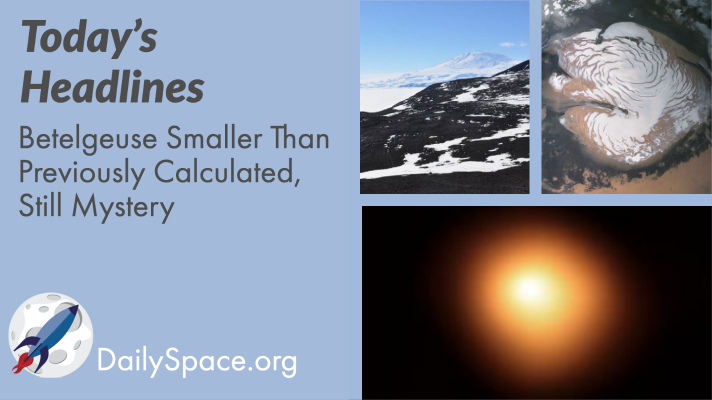
Mar 1, 2021 | Daily Space, Earth, Galaxies, Mars, Moon, Neutron Stars / Pulsars, Perseverance, Sky Watching, Supernovae, Venus
Scientists have been looking for the reclusive neutron star expected to be at the center of supernova 1987A for over thirty years, and they may have finally found it in new images from the Chandra and NuSTAR observatories. Plus, a look at conflicting papers on the object that wiped out the dinosaurs, a roundup of news, and this week’s What’s Up.

Feb 25, 2021 | Active Galaxies, Astrobiology, Daily Space, Earth, Exoplanets, Guest Interview, Mars, Mars 2020, Perseverance, Physics, Stars, Supermassive Black Holes

Feb 22, 2021 | Black Holes (Stellar), Daily Space, Exoplanets, Galaxies, Guest Interview, Mars, Milky Way, Our Solar System, Supernovae, White Dwarfs
While searching for an intermediate-mass black hole, scientists instead found a cluster of smaller black holes in the globular cluster NGC 6397. Plus, supernovae, meteorites, and an interview about mapping water ice on Mars with guests Gareth Morgan and Than Putzig from the Planetary Science Institute.

Feb 17, 2021 | Astrobiology, Daily Space, ESA, Exoplanets, Galaxies, KBOs, Mars, Nebulae, Sky Watching
A newly found object nearly four times farther out from the Sun than Pluto now holds the record for the farthest observed in our solar system. Plus, forming super-Earths, finding potentially habitable planets, jellyfish galaxies, the Crab Nebula, and this week’s What’s Up.

Feb 11, 2021 | Comets, Daily Space, Mars, Mars 2020, Random Space Fact, Space China, Space History, Spacecraft, SpaceX, Starlink
Join us for this week’s Rocket Roundup with host Annie Wilson as we look back at the launches that happened over the last week, including Yet Another Starlink and a surprise Chinese launch. Plus, updates on all those arriving Mars missions.

Feb 11, 2021 | Cassini, Climate Change, Daily Space, Earth, Galaxies, Mars, OSIRIS-REx, Saturn, Stars
Scientists collected fresh data on Orion’s bright star Betelgeuse to try and understand this star that caused so much controversy last year. They found it’s smaller than previously calculated, and last year’s dimming was likely caused by dust, but it’s also more complex than thought. Plus, galaxies, Earth’s forests, ice on Mars, and Saturn’s moon Rhea.








 We record most shows live, on Twitch. Follow us today to get alerts when we go live.
We record most shows live, on Twitch. Follow us today to get alerts when we go live.